ICP spectroscopy
Type of resources
Topics
Keywords
Contact for the resource
Provided by
Years
Formats
Representation types
Update frequencies
Scale
-
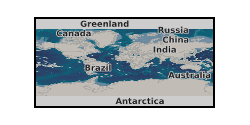
These files contain data for microscopy and mineral analyses on Fe-Ni-Cu sulfide minerals in the upper mantle and lower crust of the Kohistan arc system. Samples are dunites, harzburgites and pyroxenites with variable proportions of chromite from the Kohistan collection of Prof Brian Windley, that is held at Leicester University. Data were acquired during 2017 and 2018. Folders include: reflected light microscopy images of various sulfide minerals and mineral textures in thin section; maps and backscattered electron images of areas of thin sections; and metadata (time-resolved analysis spectral data) for laser ablation ICP-MS analysis of sulfide minerals. Laser-ablation ICPMS analyses were performed using a ESI UP213 laser system coupled to a Thermo iCAPRQ ICP-MS system at the School of Earth and Environmental Sciences, Cardiff University. The data were gathered to understand the concentrations of precious and semi-metal trace elements and their likely mineral forms in the various Fe-Ni-Cu sulfide minerals. Collected under the From Arc Magma to Ore System (FAMOS) Project.
-
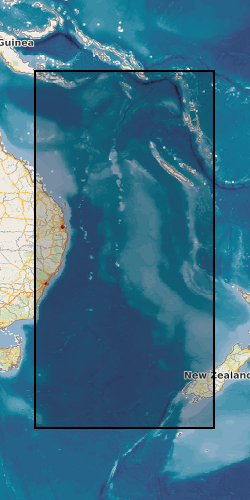
These data are derived from a voyage on Australia’s R/V Investigator, IN2019_v04, ‘Hotspot dynamics in the Coral Sea: connections between the Australian plate and the deep Earth’. The voyage surveyed the Tasmantid and Lord Howe Seamounts in the Tasman and Coral Seas, together with the Louisiade Plateau in the Coral Sea, sailing from Cairns on 7 Aug 2019 and arriving in Brisbane on 3 Sep 2019. The voyage summary is available at https://www.marine.csiro.au/data/reporting/get_file.cfm?eov_pub_id=1443. This directory includes datasets derived from ship samples and data as part of NERC grant NE/S01067X/1 (e.g., XRF and ICP-MS geochemistry data). Post voyage analyses by Australian collaborators are not included. More details are available in the README file.
-
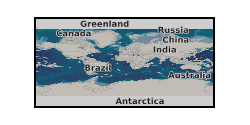
NERC Grant NE/M011488/1 ICP bulk chemistry as wt% oxide or elemental ppm of limonites from Acoje (Philippines), Caldag (Turkey), Nkamouna (Cameroon), Piaui (Brazil) and Shevchenko (Kazakhstan) laterite deposits; reduced sulphide ore from Thakaringa Mine (Australia); processing residues from the Kevitsa Mine (Finland). The data were acquired during the NERC SoS Minerals CoG3 project between 2015 and 2018 by ALS Global using either lithium borate fusion or 4 acid digestion. These data were used to assess bulk geochemistry, and the Co and Ni loading of the resources. This may be useful within the mining sector, resource assessment, processing or prospecting, geo- or material scientists and processing engineers / metallurgists. NERC grant: CoG3: The geology, geometallurgy and geomicrobiology of cobalt resources leading to new product streams
-

"Three spreadsheet tables of biomarker data, element ratios, and accumulation rates. Sediment samples from IODP Expedition 341, Site U1419 in the Gulf of Alaska. Site U1419 is located in 721 m water depth on the continental slope above the Khitrov basin. Extracted lipids were analysed by HPLC-MS. Two independent methods for bulk element geochemistry analyses were applied to the samples. More details available in the paper Zindorf et al., 2020 https://doi.org/10.1016/j.chemgeo.2020.119864"
-
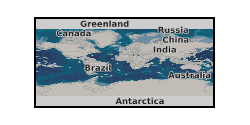
Pictures of sulphides and trace element concentrations from ore minerals in the El Teniente porphyry Cu-Mo deposit, Chile. Samples were picked for analysis from the Natural History Museum London’s ore collection. This data contains petrological photographs and trace element concentration of ore minerals. This data was collected as part of the TeaSe consortium NERC grant in order to determine the concentration and hosting of critical and precious metals in various types of ore deposits and barren rocks from different geological environments. This data was collected and interpreted by researchers at Cardiff University.
-
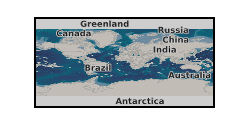
Samples are dunites, harzburgites and pyroxenites with variable proportions of chromite from the Cabo Ortegal collection of the late Prof Hazel Prichard, that is held at Cardiff University. Data were acquired during 2021 and 2022. Folders include: reflected light microscopy images of various sulfide minerals and mineral textures in thin section; element maps and backscattered electron images of areas and selected complete thin sections; and metadata (time-resolved analysis spectral data) for laser ablation ICP-MS analysis of sulfide minerals. Petrographic assessment by element mapping used a Zeiss Sigma HD Field Emission Gun Analytical Scanning Electron Microscope (A-SEM) equipped with two Oxford Instruments 150 mm2 Energy Dispersive X-ray Spectrometry (EDS) detectors at the School of Earth and Environmental Sciences, Cardiff University. Operating conditions were set at 20kV and aperture size to 120 µm, with a nominal beam current of 4 nA and working distance of 8.9 mm. Using Aztec software, maps were acquired at 100 to 150 x magnifications, with resulting pixel sizes ranging from 10 to 22 µm, depending on the resolution of acquired spectral images. Laser-ablation ICPMS analyses were performed using a ESI UP213 laser system coupled to a Thermo iCAPRQ ICP-MS system at the School of Earth and Environmental Sciences, Cardiff University. The data were gathered to understand the concentrations of precious and semi-metal trace elements and their likely mineral forms in the various Fe-Ni-Cu sulfide minerals.
-

Data collected from IODP Expedition 353, Site U1446. Data represent ISM derived rainfall and runoff proxies across Termination II. Mid-depth on CCSFA scale. Two age columns derived from age models based on LR04 benthic oxygen isotope record and AICC2012 chronology. Sheet 2 include Globigerinoides ruber sensu-stricto oxygen isotope data, Mg/Ca, Mn/Ca, U/Ca and Nd/Ca Sheet 3 include discrete portable X-Ray Fluorescence data for Ti, Al, K and Rb.
-
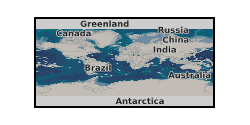
The dataset has been published open-access in Ilyinskaya et al. (2017), Earth and Planetary Science Letters, 472, 309-322 https://doi.org/10.1016/j.epsl.2017.05.025 This study quantifies the air quality impact of Holuhraun eruption 2014-2015 on populated areas in Iceland. Specifically we trace the evolution of the plume chemistry from the eruption site to 2 key areas of population: Reykjahlid, which is the nearest municipality to Holuhraun at 100 km distance, and Reykjavik capital area, which hosts ~60% of Iceland's population, 250 km distance. This dataset is the full chemical analysis of filter pack samples of volcanic gas and aerosol, including trace species (e.g. heavy metals).
-
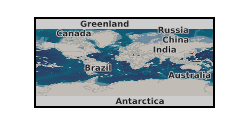
Sample locations and geochemical data from the Aurora Ni-Cu-PGE magmatic sulphide deposit, Northern Bushveld Complex, South Africa. Samples were taken from two boreholes on the La Pucella farm, courtesy of Pan Palladium Limited. This data contains petrological photographs; scanning electron microscope element maps and identification of platinum group minerals and precious metal minerals; and trace element concentration of ore minerals. This data was collected as part of the TeaSe consortium NERC grant in order to determine the concentration and hosting of critical and precious metals in various types of ore deposits and barren rocks from different geological environments. This data was collected and interpreted by researchers at Cardiff University and is used in a paper, available at https://doi.org/10.1016/j.oregeorev.2019.02.008.
-
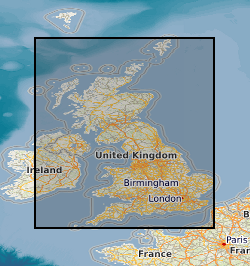
Water samples have predominantly been collected by the G-BASE (Geochemical Baseline Survey of the Environment) project at an average sampling density of one sample per 1.5 km square. Samples have been collected from approximately 85% of Great Britain but it is only from Wales and Humber-Trent southwards that a wide range of analytes have been determined. Currently G-BASE stream water samples collected from high order streams are determined by ICP-AES for 27 elements - Sr, Cd, Ba, Si, Mn, Fe, P, S (as SO42-), B, Mg, V, Na, Mo, Al, Be, Ca, Zn, Cu, Pb, Li, Zr, Co, Ni, Y, La, K and Cr; and by quadrupole ICP-MS for 24 trace elements - Li, Be, Al, V, Cr, Co, Ni, Cu, As, Rb, Y, Zr, Mo, Ag, Cd, Sn, Sb, Ba, La, Ce, Tl, Pb, Th and U. Automated colorimetric methods are used to determine Cl and NO3- and ion selective electrode is used to determine F. Waters are also analysed for non-purgeable organic carbon (NPOC) to determine dissolved organic carbon content. All samples have routinely been analysed for pH, conductivity and bicarbonate. Much of the UK coverage also includes uranium and fluoride analyses.
 NERC Data Catalogue Service
NERC Data Catalogue Service